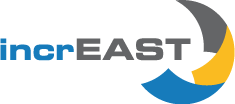

What are "Key Institutions"? How were they selected for this database? Find out more below.
Under "Key National Research Institutions" (short: "Key Institutions") in EECA countries we understand public or private research units which are centred around a specific scientific field such as scientific institutes, national research centres (or institutes thereof), faculties/institutes of universities, independent laboratories or other respective organisations which
"Key National Research Institutions" (short: "Key Institutions") have been identified first of all by project experts at Archimedes based on
Based on (1) and (2) a list of potential key national research institutions in EECA region has been compiled. The list further was sent to Regional Coordinators in EECA countries who corrected names of research institutions in their countries, added contact and other information as well as added “nationally important” research institutions which did not yet participate in any of the international research cooperation programmes but according to the expert assessment of the regional coordinators were nationally important research institutions that should be considered as potential future partners in the international research cooperation.